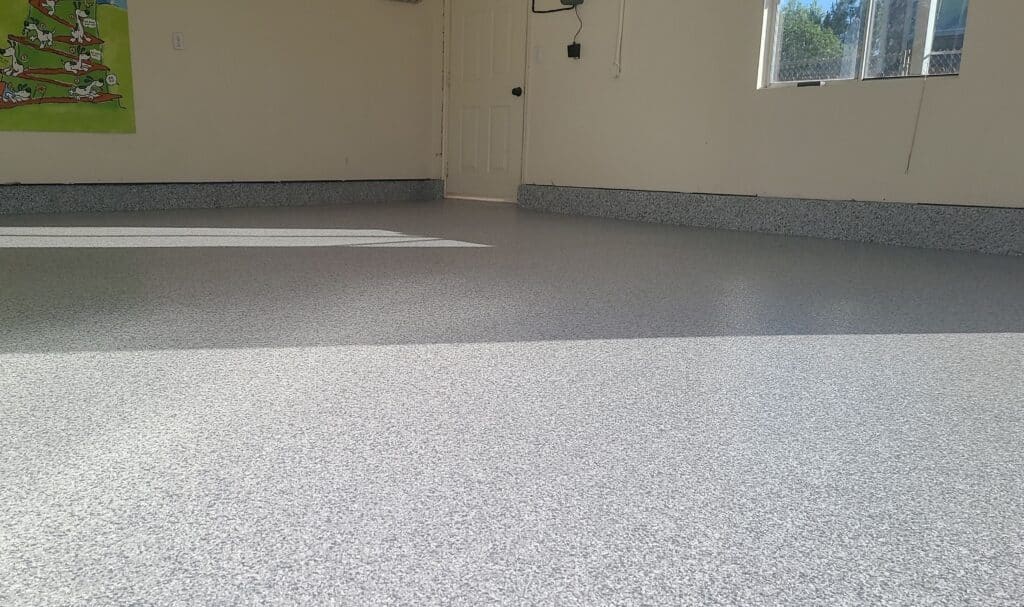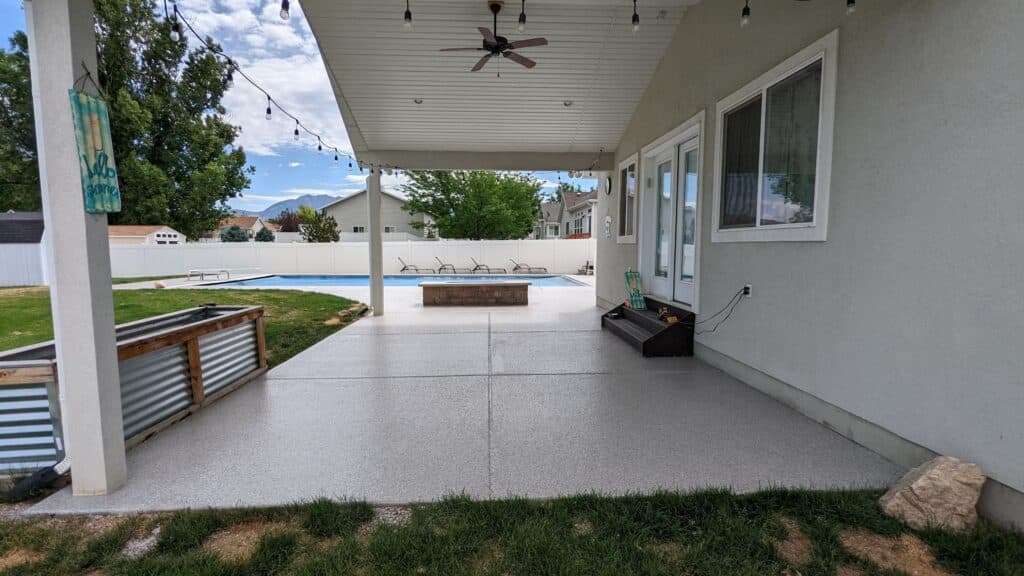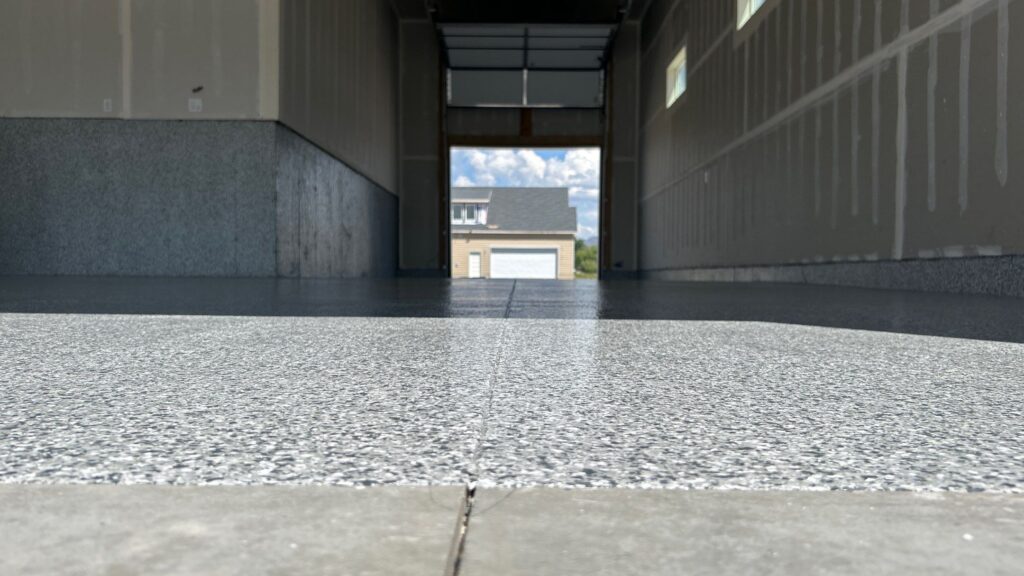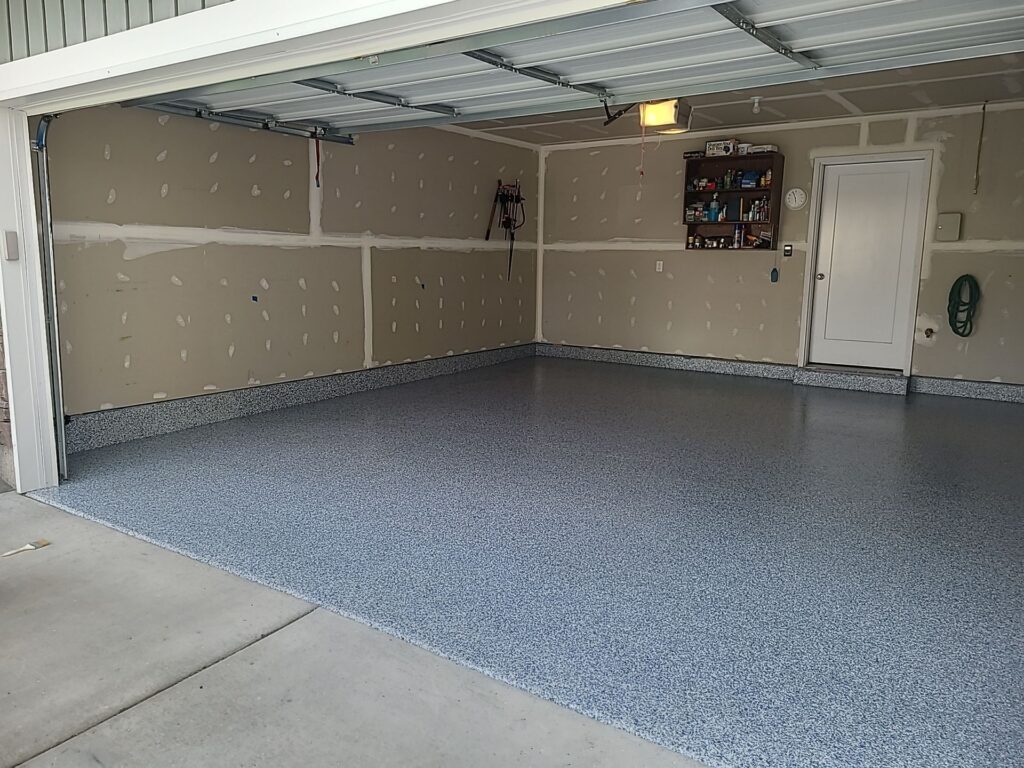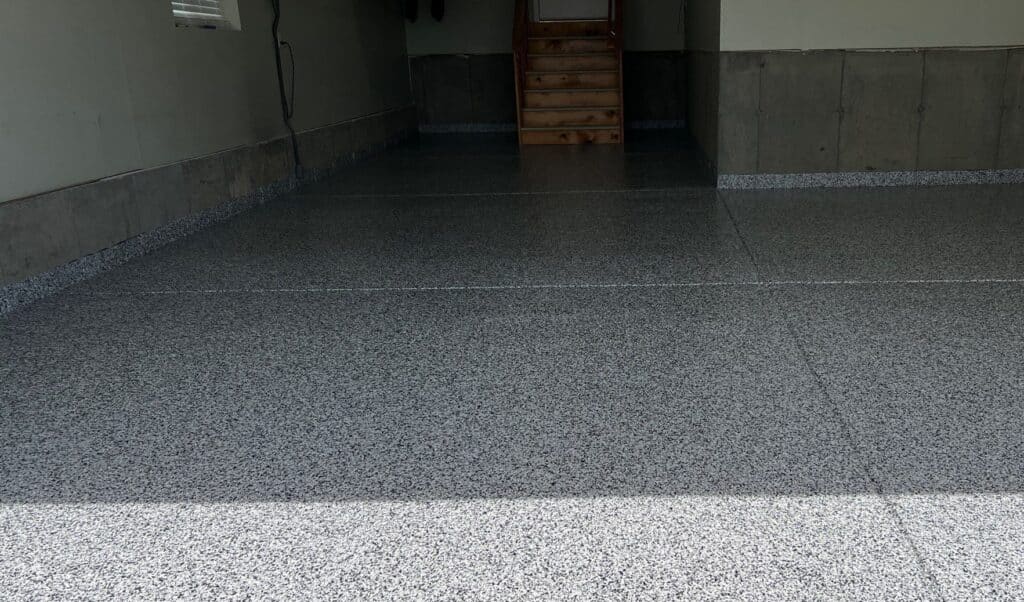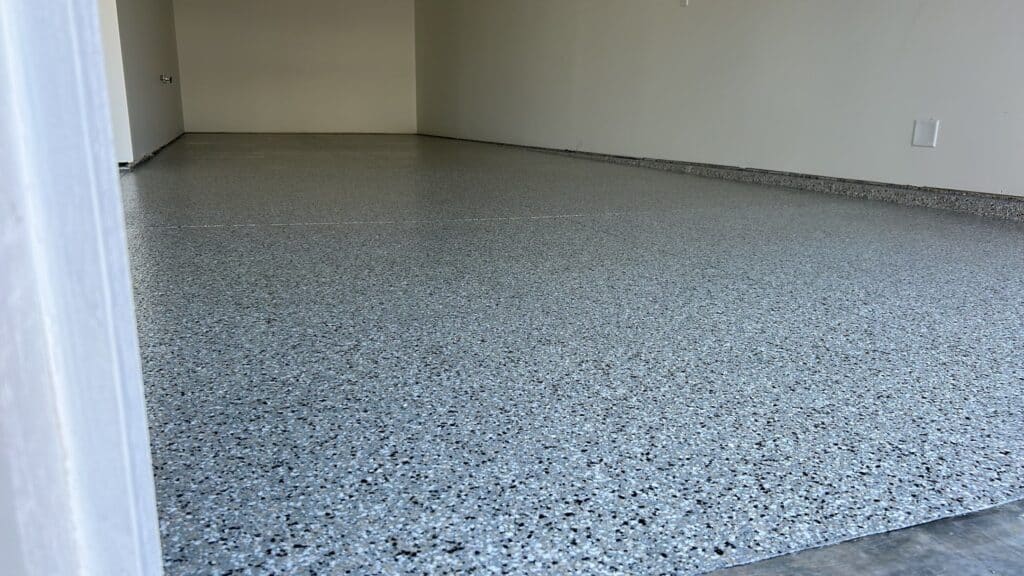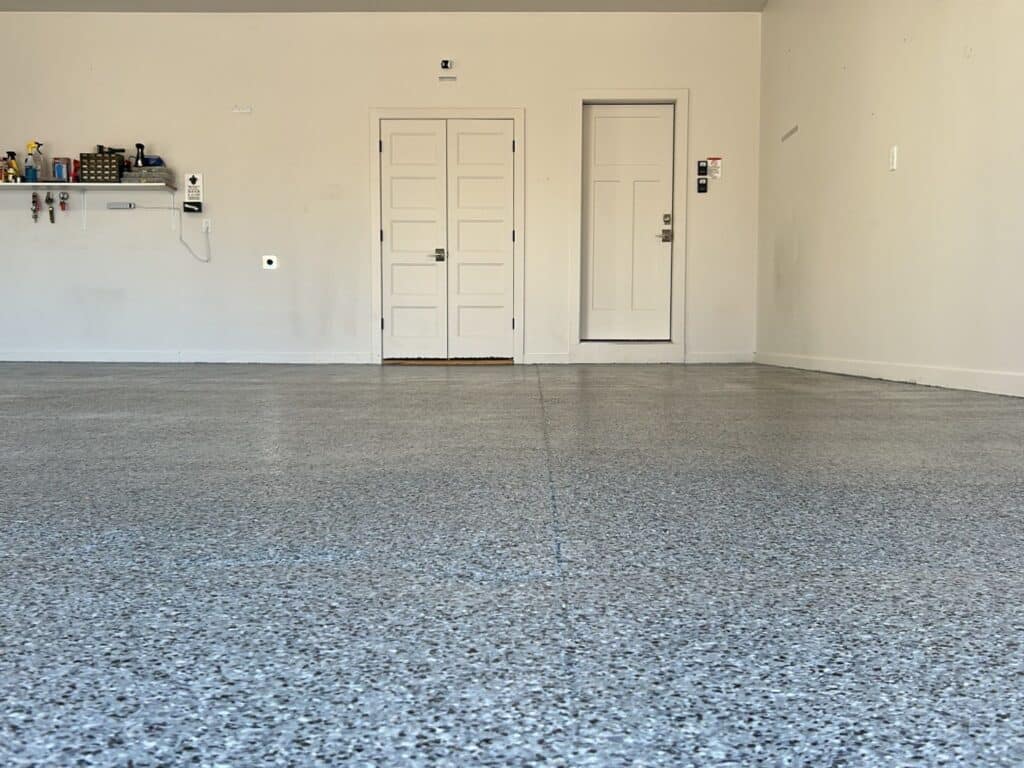
The 2022-23 winter season in Utah was record-breaking in many ways, with 13 of 15 Utah ski resorts breaking all-time snowfall records. With last winter in the rearview mirror, you may be considering preparing your home for this winter. Whether you’re anticipating snowfall or want to protect against cold weather, finding the right floor coating for your concrete floors is a great way to prepare.
But how do you find the right floor coating for your space? At Solid Garage Floor Coatings of Utah, we understand how difficult it is to choose a floor coating for your home. Our team has several recommendations for homeowners to consider before making this major investment. If you want to install a floor coating this winter, keep reading to see what our team recommends for your Utah home.
The Challenges of Utah’s Winters
There are several challenges Utah homeowners will face throughout the winter months that may significantly harm their concrete floors. Some of these challenges include the following:
- Snow and ice: Utah receives a significant amount of snowfall throughout the winter. As this snow melts and turns into ice, it can create especially slippery and dangerous surfaces around your home.
- Road salt: Road salt is used to prevent roads from getting icy. However, this road salt can get tracked into your garage and home, leading to potential damage to your floor.
- Temperature fluctuations: The freeze-thaw cycle is common in Utah. Snow and ice melt during the warmer winter days and freeze at night, leading to the expansion and contraction of various surfaces leading to damage to uncoated floors.
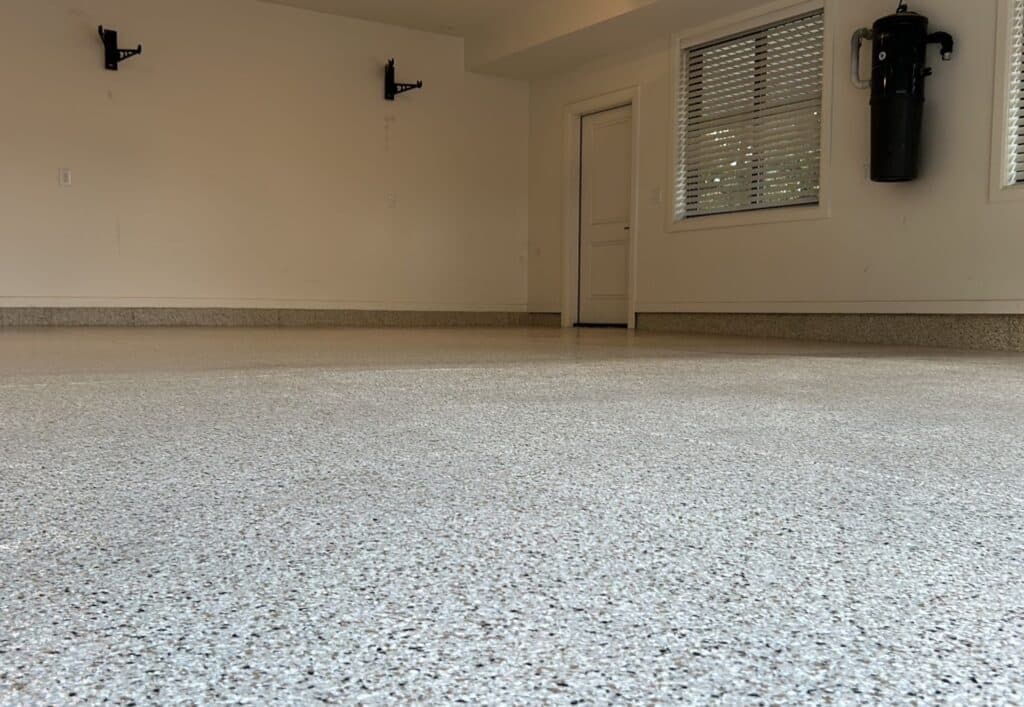
Why Garage Floor Coatings are Important
Floor coatings are a great way to improve the aesthetics of your garage. However, there are far more substantial benefits to installing the right floor coating in your home. One of the most significant benefits of installing a floor coating in your home is its ability to protect your concrete against moisture and salt absorption. By preventing this absorption, you protect your floors from premature deterioration.
Not only will floor coatings prolong the lifespan of your home, but they will also make cleaning up winter messes much easier. With the right floor coating in your home, you can sweep up any salt or mop any slushy mess that gets into your home. Save yourself time and money by making the investment in a floor coating for any concrete floors in your home.
Choosing the Right Floor Coating for Winter
There are several floor coatings to choose from when selecting one, which can make finding the right coating for your home more difficult. The most common floor coating options include the following:
Concrete Sealer
Concrete sealers are a protective coating applied to concrete surfaces. They prevent moisture absorption, staining, and damage from various sources. When applied, a concrete sealer acts as a barrier, forming a protective film on the surface. While concrete sealers are a great option for protecting your floors, they might not be the right floor coating for an especially wet winter.
While concrete sealers are great at blocking moisture, they aren’t the best option to protect against abrasive agents like de-icing chemicals. If your floors see a great deal of foot traffic or the chance of high exposure to de-icing products, it may be best to look for a stronger floor coating option.
Epoxy
Epoxy floor coatings are a protective coating made of a combination of epoxy resin and hardening agents. When mixed together, these create a strong, durable, and chemically resistant surface. There are many benefits to using epoxy floor coatings on your concrete floors, but they might not be the absolute best solution for your floors.
Epoxy floor coatings are a wonderful way to protect against abrasive chemicals like de-icing agents. In addition to their chemical resistance, they also do a wonderful job of preventing moisture absorption. However, these floor coatings may be more slippery than some other coating options. If you’re looking for a coating with more slip resistance, there might be better options available.
Polyaspartic
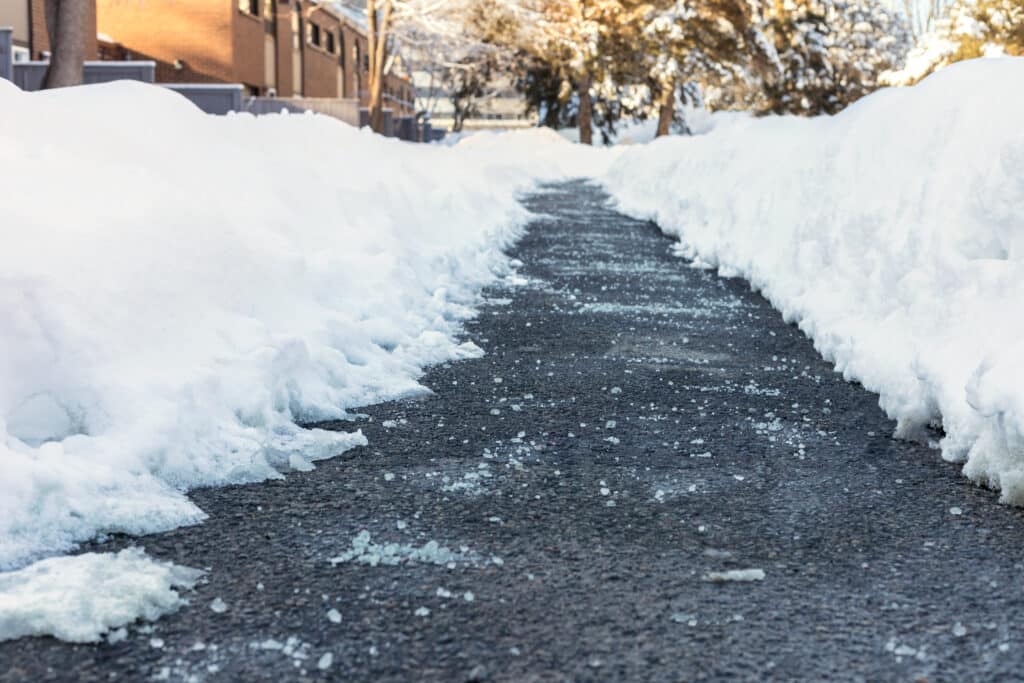
Polyaspartic floor coatings are a more advanced floor coating option, which cures more quickly than some other floor coating options. They are a highly durable floor coating, which is commonly used in a variety of commercial and residential properties. Of all of the floor coating options on the market, it is the most reliable option to protect your floors from harsh winter weather.
These floor coatings are the strongest option on the market. With their 20-year lifespan, chemical resistance, and more, it will help you keep your floors safe for many winters to come. If you are considering investing in a floor coating to protect your concrete against harsh winter conditions, a Polyaspartic floor coating is a great way to do so.
Everything You Should Consider
There are many factors to consider when choosing the right floor coating for your space. To make the most informed decision when choosing a floor coating for your home, consider each of the following:
- Cost: The cost of your floor coating will play a significant role in the choice you make. While epoxy, polyurea, and Polyaspartic coatings are a more durable floor coating option, they are more expensive than stains and sealers.
- Lifestyle: Consider your lifestyle when choosing the right floor coating. Spaces like a workshop may require a more durable floor coating than a space where you are parking a car or simply walking through.
- Maintenance: Think about how much maintenance you want to invest in your floors when choosing your floor coating. Polyurea and epoxy are lower maintenance than stained floors, which may require more frequent touch-ups.
- Installation time: Floor coatings weren’t created equal, and some require substantial time for installation. Polyaspartic and polyurea floor coatings cure more quickly than epoxy floor coatings, making them a better choice if you require faster installation.
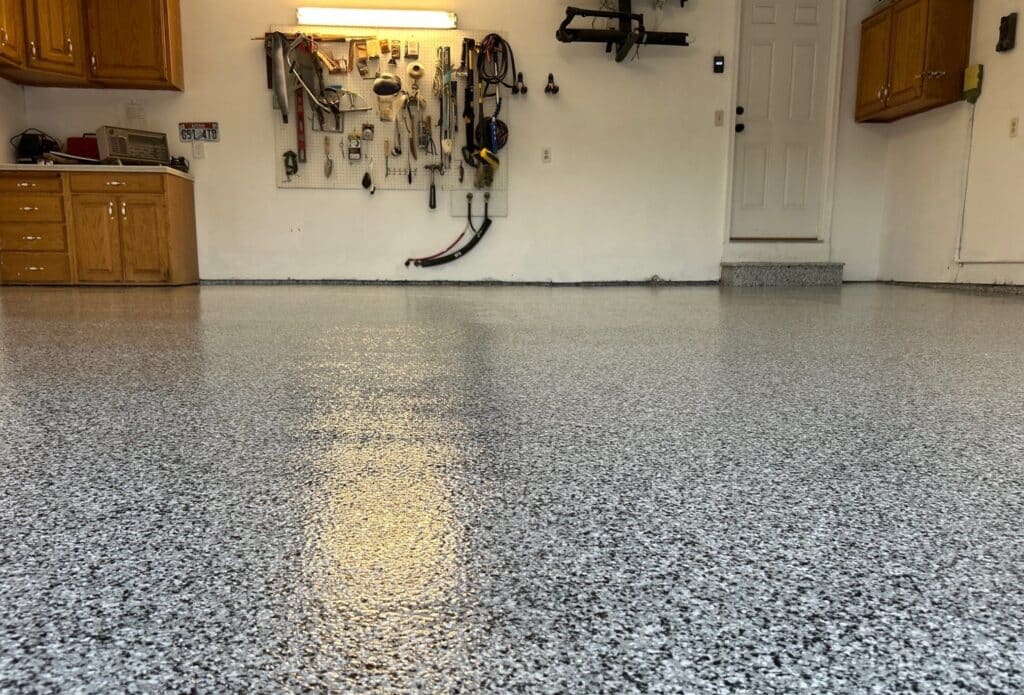
The Advantage of Working with Solid Garage Floor Coatings of Utah
Choosing the right floor coating for your home is an incredibly important decision, and deciding which is best for your home can be difficult. If you want to invest in a floor coating but you aren’t sure which is the right floor coating for your space, you should consider working with a garage floor coating professional.
With years of experience applying a variety of floor coatings to homes and businesses across the Northern Utah area, our professionals at Solid Garage Floor Coatings of Utah can help you find the perfect solution for your space. By seeking the advice of professionals, you ensure that you choose the right floor coating for your space and that it is applied correctly for the best durability and protection.
If you’re looking for the right floor coating for your home, consider reaching out to our team for advice. We can guarantee that your floor coating is the perfect fit for your home and lifestyle. Don’t wait to reach out for help from the professionals. Contact our team today.

